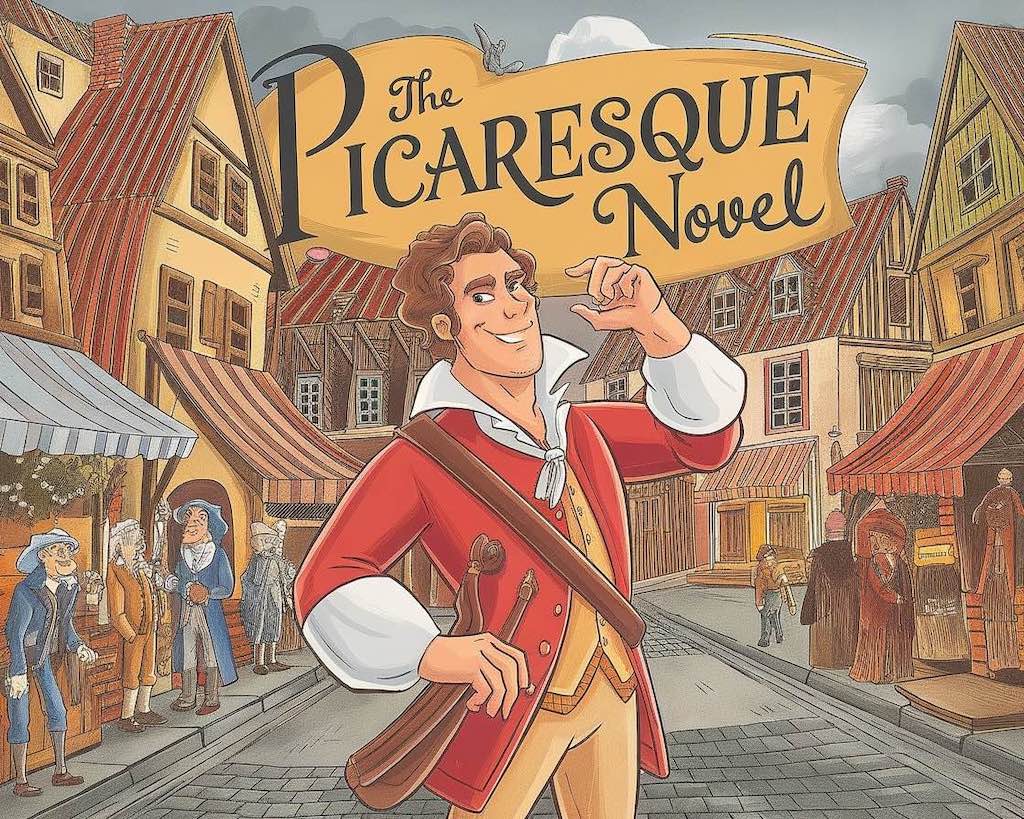The picaresque novel challenges the traditional hero with its use of an anti-hero, often a picaro or rogue, who successfully maneuvers through various social classes, relying on wit rather than moral rectitude. Picaresque literature engages audiences by blurring the line between heroism and villainy, keeping them invested in the unpredictable journey of its protagonist. Through a first-person narrative, it immerses the reader in its episodic and often comedic tales of survival against the odds.
Originating in Spain during the 16th century, this genre has had a far-reaching influence on many noteworthy authors and novels around the world. The portrayal of Enlightenment themes and countergenre elements often emerge. Scenes from European literature, including references to significant periods like the Thirty Years’ War, provide a detailed context of the era.
Characteristics of Picaresque Novels
At the heart of the picaresque novel lies its distinctive structure, characterized by an episodic format. In this format, the picaro often navigates a world rife with hypocrisy and corruption, providing readers with a lens through which they can critique society. Through this lens, authors investigate the flaws in human nature, social hierarchies, and institutions.
A defining characteristic of the picaresque novel is its use of humor and satire to critique society. This humorous approach facilitates a deeper examination of serious themes, as readers laugh while reflecting on life’s absurdities. The comic elements often mask a deeper social commentary, skewering the pretensions of the higher classes with wit and irony.
The setting also plays a crucial role in picaresque novels. The picaro often moves through various social strata, encountering a diverse array of characters. The pícaro navigates this flawed world with cunning, exposing the vices and follies of those in positions of power. This exploration extends beyond simple adventure, weaving a complex portrayal of the social dynamics at play in each encounter.
The Reader’s Experience
Readers find themselves drawn to the picaro’s charm and wit, often leading to a deeper connection with the character, empathizing with travails and thriumps over a string of misadventures. Readers may find themselves laughing at the absurdity of the picaro’s situations while simultaneously grappling with profound questions of ethics and morality.
The picaro’s relatability emerges from a blend of wit and survival instincts. Because of this, readers often find themselves charmed by the protagonist’s tenacity as he navigates various social milieus. The picaro’s adventures expose the hypocrisy and contradictions within society, which leads readers to reflect on their own beliefs and assumptions.
Emotional Response: Humor, Empathy, and Reflections on Morality
The enduring appeal of the picaresque novel lies in its ability to connect human adaptability and shrewdness with humor. It provides insights into the incongruities of society and sustains the imagination and interest of readers.
Laced with satirical undertones, the narrative of a picaresque novel encourages empathy for the protagonist’s plight, whose choices often reflect a blend of humor and empathy that drives the reader’s motivation to ponder morality beyond simple binaries. In exploring these narratives, readers engage in an introspective journey, blending laughter with serious inquiry.
Notable Picaresque Novels and Their Impact
Several key titles exemplify the richness of the picaresque novel, each leaving a lasting impact on readers. Miguel de Cervantes’ Don Quixote (1605), often considered the first modern novel, follows the misadventures of a delusional knight and his loyal squire. Through their absurd exploits, readers gain insights into the nature of reality and illusion, which challenge their perceptions of heroism and sanity.
Mark Twain’s The Adventures of Huckleberry Finn (1884) features a young boy who escapes a restrictive environment to embark on a journey down the Mississippi River. Huck’s interactions with various characters highlight the moral dilemmas of a divided society, which leads readers to question their own values and beliefs about freedom and morality.
These novels, along with others in the genre, entertain while shaping readers’ perspectives on the nature of belonging. The picaresque tradition compels us to question our assumptions and confront complex moral dilemmas, deepening our engagement and providing new ways to perceive the world around us.
Further Reading
What’s a Picaresque? The Top 5 Novels by William Giraldi, Publishers Weekly
Picaresque Novels and Novelists by Nasrullah Mambrol, Literariness.org
The Hobbit Reconsidered as a Picaresque Novel by Edwin Turner, Biblioklept




